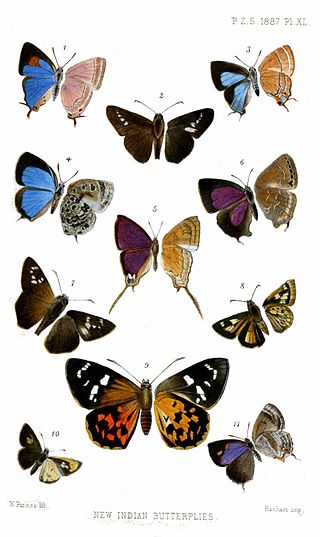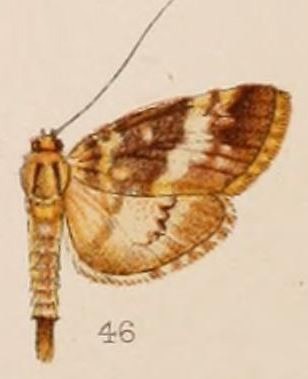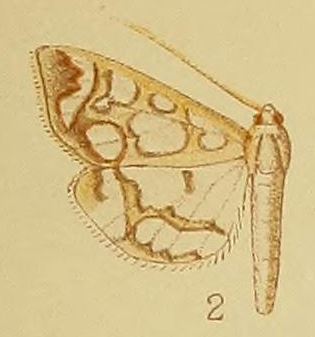
Eilema is a genus of moths in the subfamily Arctiinae. The genus was erected by Jacob Hübner in 1819.

Pangora is a genus of moths in the family Erebidae from Nepal, India and Sri Lanka. The genus was erected by Frederic Moore in 1879.

Zinaspa is an Indomalayan genus of butterflies in the family Lycaenidae.
Zadadra is a genus of moths in the subfamily Arctiinae.

Lygropia is a genus of snout moths in the subfamily Spilomelinae of the family Crambidae. It currently comprises 66 species, which are mostly found in the tropical and subtropical regions of the Americas, Africa and Asia, but not in Australia.

Polythlipta is a genus of moths of the family Crambidae.

Anticarsia is a genus of moths of the family Erebidae. The genus was erected by Jacob Hübner in 1818.
Diastreptoneura is a monotypic moth genus of the family Noctuidae. Its only species, Diastreptoneura distorta, is found in the Brazilian state of Amazonas. Both the genus and species were first described by Warren in 1889.
Focillodes is a genus of moths of the family Erebidae. The genus was erected by George Thomas Bethune-Baker in 1906.
Gigides is a genus of moths of the family Erebidae. The genus was erected by George Hampson in 1926.
Leuciris is a genus of moths in the family Geometridae. The genus was first described by Warren in 1894.

Cryptophlebia is a genus of moths belonging to the subfamily Olethreutinae of the family Tortricidae. It occurs in all biogeographical regions except for the Nearctic.
Pontia distorta, the small meadow white, is a butterfly in the family Pieridae. It is found in Ethiopia, Somalia, northern Kenya and possibly north-eastern Tanzania. The habitat consists of sub-desert thorn-bush areas.
Anydrelia distorta is a moth in the family Geometridae first described by George Hampson in 1895. It is found in India, Nepal and China.
Amata distorta is a moth of the subfamily Arctiinae. It was described by Rothschild in 1910. The type location is listed as J.Pulo Bisa bei Obi.
Zadadra costalis is a moth of the subfamily Arctiinae. It is found in northern China and Assam, India.
Zadadra fuscistriga is a moth of the subfamily Arctiinae. It is found in Myanmar and Assam, India.

Pangora distorta is a moth of the family Erebidae first described by Frederic Moore in 1879. It is found in the north-western Himalayas and Nepal.
Catocala distorta is a moth in the family Erebidae. It was described by Arthur Gardiner Butler in 1889. It is found in Himachal Pradesh, India. The species is 52 millimetres (2.0 in) long and is different from Catocala nymphaea by being more brown and having much duller thorax and forewing.

Cycloseris distorta is a species of disc coral in the family Fungiidae. It is a free-living, solitary coral and is native to the tropical and subtropical Indo-Pacific region where it is found on soft sediment in shallow water.





